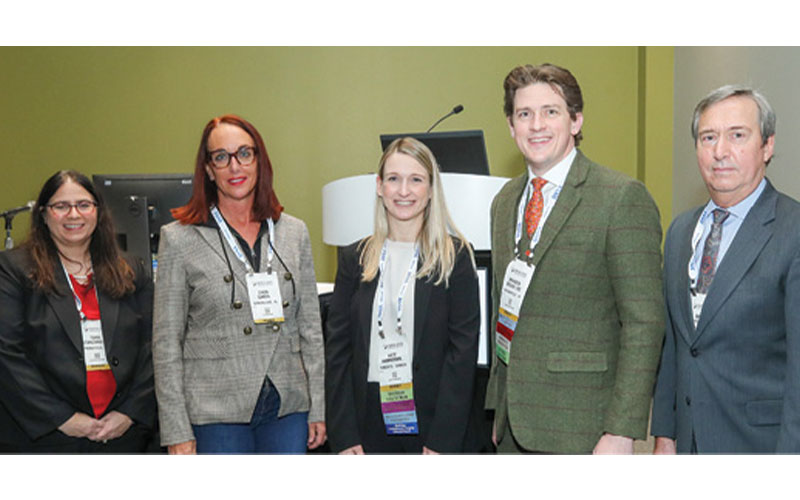The Forgotten Middle — Strategies to Engage Mid-Career Radiologists
Mid-career professionals need flexibility, professional development and paths to promotion
Unlike the junior and senior phases of a radiologist’s career, the middle years are often overlooked from a programming and support standpoint.
“There’s a lot of support and energy directed at the beginning and the end of our careers and without trying, we’ve neglected the middle,” said Brandon Brown, MD, chair of the RSNA Professionalism Committee, who sponsored an RSNA 2021 session on this topic. “We’ve heard from a growing number of mid-career radiologists that they feel forgotten.”
In the decades spent in the mid-career phase — defined as five years past training and more than five years from planned retirement — radiologists may experience stagnation, lack of fulfillment at work and increased expectations for productivity.
“We spend a substantial part of our career in these middle years, when there is a greater potential for burnout but fewer resources available,” said incoming chair of the RSNA Professionalism Committee, Kate Hanneman, MD, MPH, FRCPC, associate professor at the University of Toronto.
Dr. Hanneman said leadership can assist mid-career professionals by providing flexibility, supporting professional development and identifying paths to promotion. Radiologists can help themselves by working on creating a career plan, finding a mentor and engaging in networking.
Dr. Brown addressed strategies for retaining the mid-career radiologist.
“The mid-career is so challenging because you are no longer a rising star and you’re not yet a revered senior radiologist,” said Dr. Brown, vice chair of the Department of Radiology at the Indiana University School of Medicine. “It’s no man’s land in the middle when the thrill of work has faded and work becomes ordinary, routine and less fulfilling.”
As departments and practices grow in size it’s easier for people to get lost and suffer from a lack of attention, he said. Disappointment syndrome may also set in.
“There’s so much energy and promise attached to your career in the beginning, so many mentors pulling for you,” Dr. Brown said. “Eight to 10 years in, you start to hear people worrying about squandered potential and unmet expectations.”

Support Needed for the Middle Years
To engage the mid-career radiologist, Dr. Brown suggested overhauling recognition programs by recognizing and encouraging the non-transactional part of the work, including acknowledging the physician exceling as a consultant, giving compassionate care, providing excellent sponsorship and being an on-the-job educator.
Brent H. Wagner, MD, MBA, shared the challenges facing private practices, including staff shortages and constantly increasing case volumes.
“What I find most challenging is the increased rate in urgent cases to be read,” said Dr. Wagner, executive director of the American Board of Radiology. “We can no longer keep up with the scanners.”
Because it’s increasingly difficult to be proficient in all areas of radiology, he said radiologists should seek out an area for clinical sub-specialization they enjoy.
Tara M. Catanzano, MD, addressed the unique challenges of mid-career faculty, which for many includes raising young families and caring for aging parents. She said it’s challenging to create programming to support mid-career radiologists because there are so many different career paths available.
“What mid-career radiologists have in common is many of us feel stuck, we’re not sure where we’re going or what to do next,” said Dr. Catanzano, professor of radiology, University of Massachusetts Medical School.
The remedy, she said, is to embark on a journey of self-discovery and to seek out people who can help you get where you want to go.
“It’s important to get to know yourself, to sample different things and to write down your ideas and discuss them with friends or colleagues,” Dr. Catanzano said. “Mid-career radiologists need to engage in self-reflection to understand what they love to do and what their next steps should be.”
Cheri L. Canon, MD, professor and chair at the University of Alabama Department of Radiology, emphasized that academic radiologists who feel ‘forgotten in the middle’ should avail themselves of multiple people for different types of support.
“Mentors are like sherpas, sponsors encourage and tell us what we can achieve, and coaches help us identify our deficits,” said Dr. Canon, who is also president of the Society for Chairs of Academic Radiology Departments.
From an organizational standpoint, she said departments should consider placing radiologists in leadership roles earlier and helping women and minorities break through the glass ceiling.
“We need to create more development opportunities for mid-career professionals with robust faculty development programs,” Dr. Canon said.
For More Information
Access the presentation, “Engaging the Mid-Career Radiologist: Challenges, Retention and Opportunities,” (W4-RCP19) on demand at Meeting.RSNA.org.
Learn more about the RSNA Professionalism Committee and the available self-assessments at RSNA.org/Professionalism.
Visit the RSNA Online Learning Center for learning opportunities in professionalism.